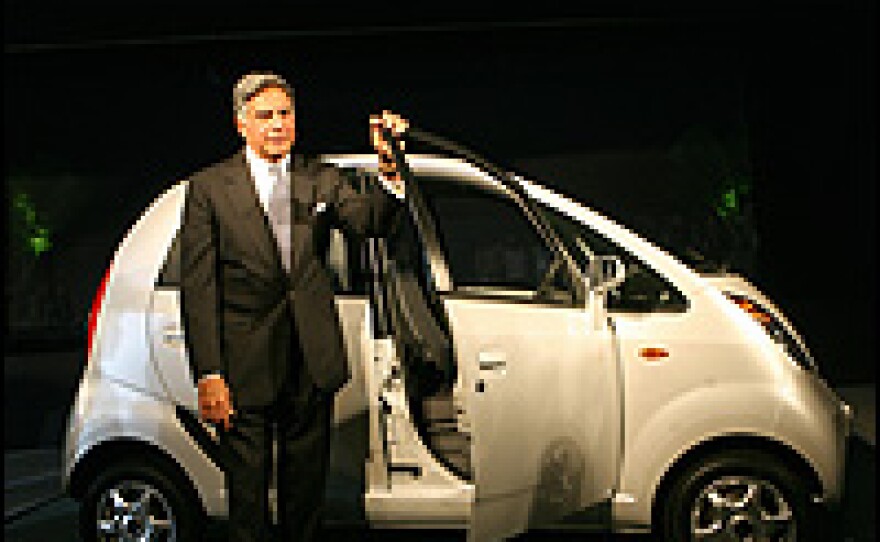

It is billed as the world's cheapest car — and the world is eager for it to hit the streets of India.
The Nano, which was announced in January and is expected to debut later this year, is the first in a wave of extremely cheap cars intended to put a multitude of new motorists behind the wheel for the first time. It carries a basic price of 100,000 Indian rupees, or roughly $2,500, about half the current cost of its nearest rival.
The manufacturer, Tata Motors, says a wholly new market is opening up in India. Its claims to have received a "mind-boggling" number of comments and inquires about its new vehicle.
Unveiling the Nano earlier this year amid huge fanfare, company chairman Ratan Tata placed the car alongside some of history's most revolutionizing achievements, including the moon landing and the inventions of the laptop and the airplane.
The Nano is about 10 feet long and 5 feet wide, has four doors and can accommodate four adults. Its two-cylinder engine is expected to get around 47 miles to the U.S. gallon — a crucial statistic in this age of sky-high oil prices. And Tata Motors claims that it will produce lower emissions than two-wheelers.
Competing Against Two-Wheelers
Nowhere is interest in the new car greater than in the Indian motorcycle and scooter industry. Last year, the industry sold about 7 million two-wheelers — six times the number of cars sold.
But Tata has made clear that his new vehicle is intended as an all-weather and safer alternative. He got his inspiration from seeing a man riding on a scooter with his wife and children, including a baby. This is one of the most disturbing — and common — sights on India's lethal roads. The man wears a helmet. The wife and kids often do not.
Om Soni has been selling motorcycles in New Delhi for more than 25 years. He's confident that the Nano will have little impact on his business. Part of the reason, he says, is that the car costs so little. He believes status-conscious Indians will be put off by the idea of purchasing the car because they will worry that their peers will assume they cannot afford anything better.
Motorcycles and scooters are a key part of India's economic life. In the countryside, where 70 percent of Indians live, the two-wheelers are like horses, carrying goods to the market and delivering supplies. They travel roads impassable by car, connecting remote villages. In cities, two-wheelers deliver a multitude of commuters to work every day.
Car Ownership Rise Worries Environmentalists
Per capita, the number of Indians who own passenger cars is still very low when compared with developed countries — just eight in 1,000. But, to the alarm of environmentalists, that number is growing rapidly.
Tata plans to start out producing 250,000 Nanos a year, eventually rising to 1 million. The car is expected to start rolling out late this year.
The Indian government has embarked on a vast national highway building project to try to cater to this new motoring boom. City authorities are building roads and flyovers, but they are struggling to keep pace with the rocketing number of vehicles. Some of the country's vast and overcrowded cities, including Calcutta and Mumbai, are frequently jammed for hours every day.
Copyright 2022 NPR. To see more, visit https://www.npr.org. 9(MDAzMjM2NDYzMDEyMzc1Njk5NjAxNzY3OQ001))





